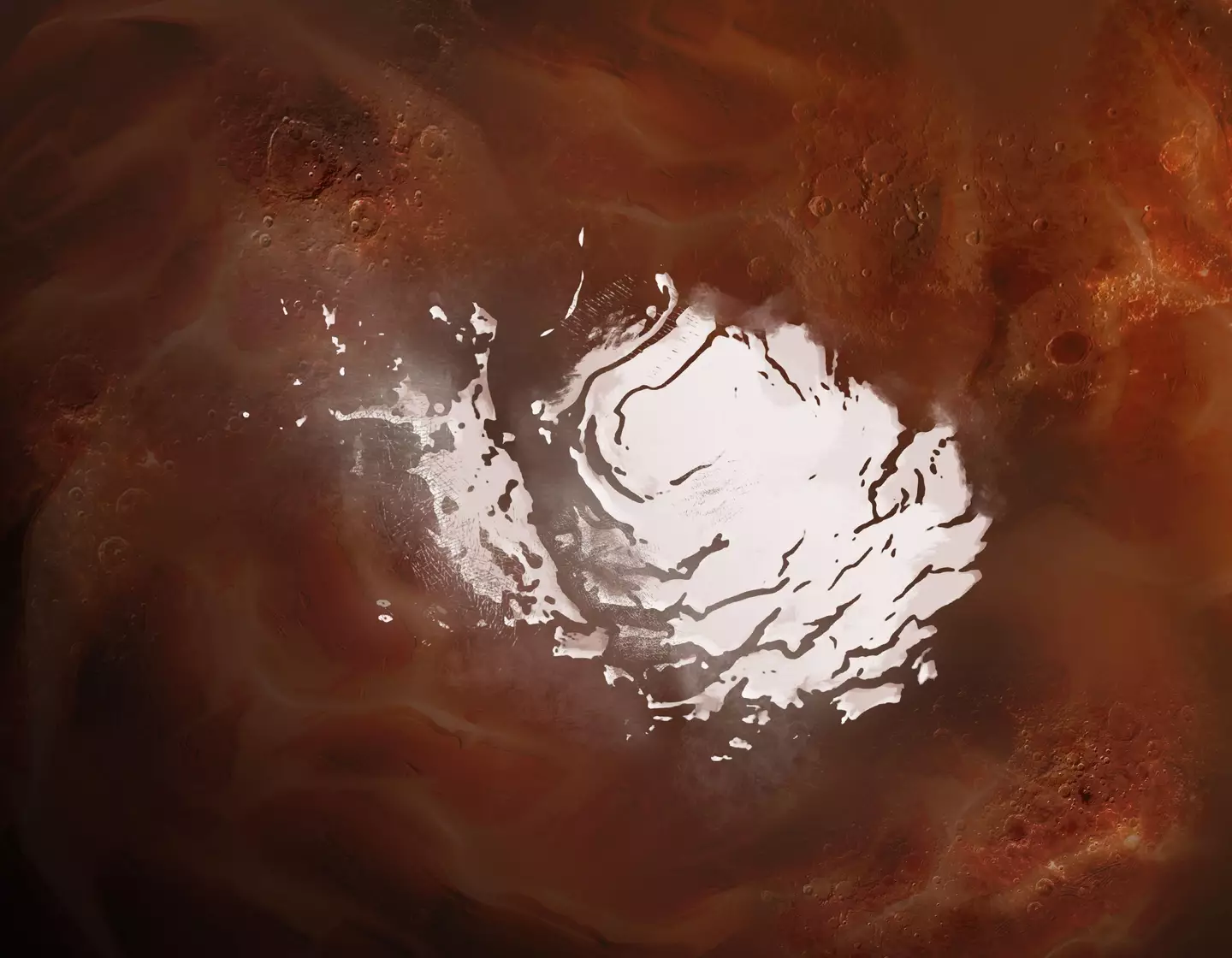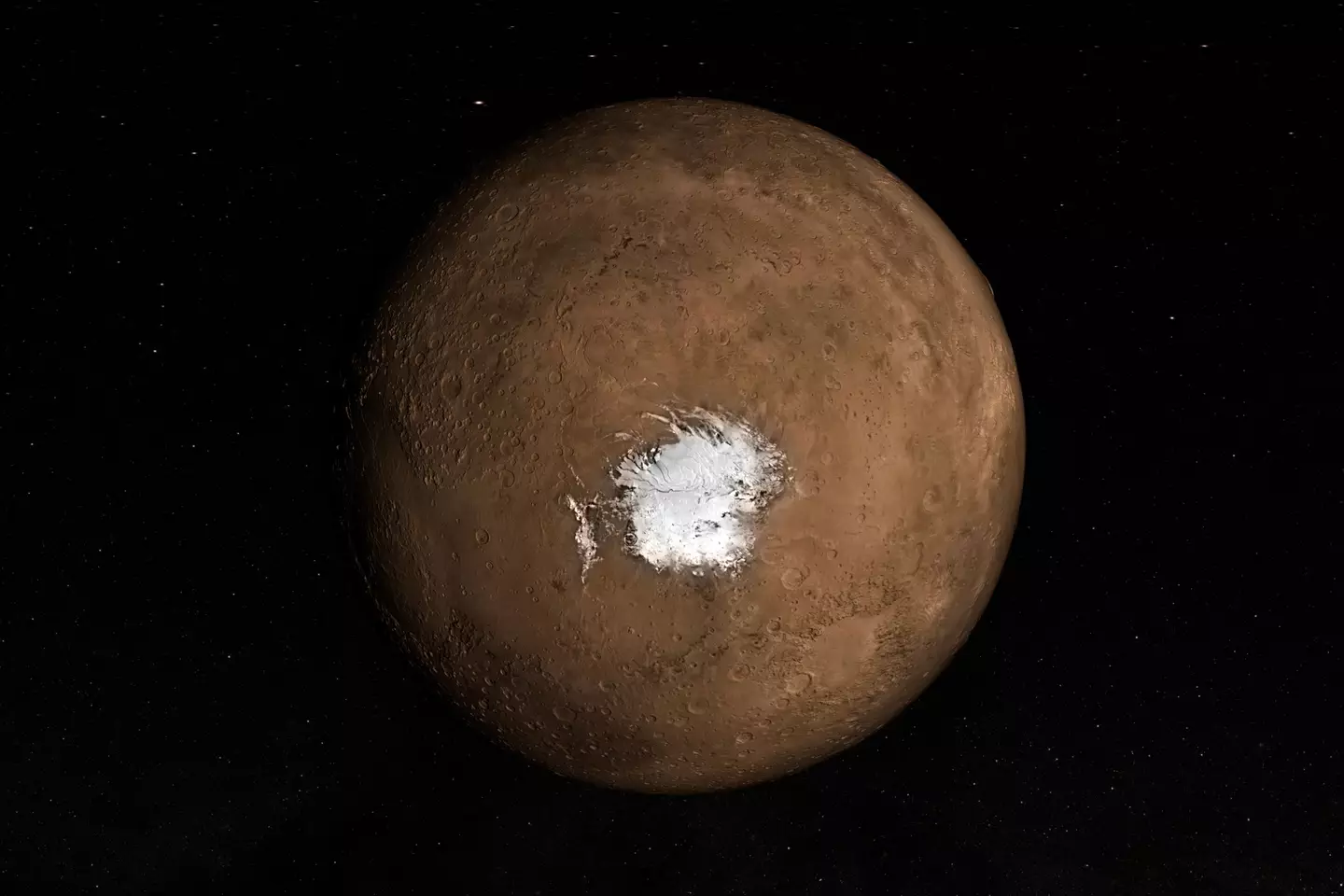
A new study suggests that the pool of water detected on Mars may not be what it seems.
Back in 2018, scientists recorded bright radar reflections from Mars' southern polar cap, which they took to be signs of water lying around 1.4km beneath the surface.
At the time, it was thought to be the first such lake discovered on the Red Planet, and a sign of potential life.
Advert
However, a new study has poured cold water on the excitement.

Researchers at the University of Texas in Austin used measurements recorded by MARSIS (the Mars Advanced Radar for Subsurface and Ionosphere Sounding) to analyse the reflectivity of Mars’ surface.
The study has suggested that what scientists were seeing was in fact just a dusty mirage, as according to the research, the reflections matched volcanic plains found right across the surface of Mars.
Advert
Cyril Grima, the lead author of the study, said, 'For water to be sustained this close to the surface, you need both a very salty environment and a strong, locally generated heat source, but that doesn’t match what we know of this region.
'On Earth, iron-rich lava flows can leave behind rocks that similarly reflect radar. Other possibilities include mineral deposits in dried riverbeds. Either way, figuring out what they are could answer important questions about Mars’ history.
'Although there may not be liquid water trapped under the southern polar cap, there is plenty of water ice on Mars, including in the thick polar caps. The new study hints at Mars’ wetter past.'

The study concludes that the readings from the planet’s surface and those detected beneath the polar cap by MARSIS are probably the same.
Advert
It reads, 'Our results provide insights into what current terrains existing at the surface of Mars could be responsible for the SPLD bright basal reflections.
'Most of those bright regions are subdivisions of larger units geologically related to volcanic constructs.'
The search for a hidden lake deep beneath Mars is not over, however.
Grima is now working with Isaac Smith, a Mars geophysicist at York University, to potentially use radar to find evidence of water beneath the surface.
Advert
Smith said he hasn't lost hope of finding water beneath the polar cap.
He explained, 'I think the beauty of Grima’s finding is that while it knocks down the idea, there might be liquid water under the planet’s south pole today, it also gives us exact places to go look for evidence of ancient lakes and riverbeds and test hypotheses about the wider drying out of Mars’ climate over billions of years.'
If you have a story you want to tell, send it to UNILAD via [email protected]
Topics: Science, World News, Space
